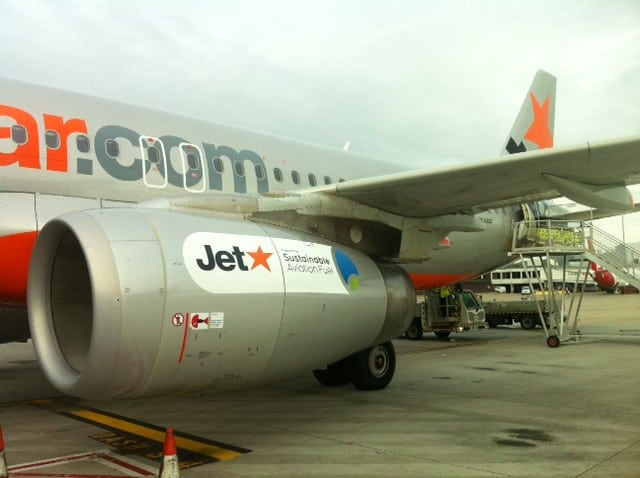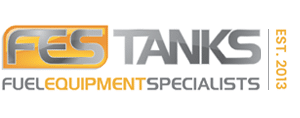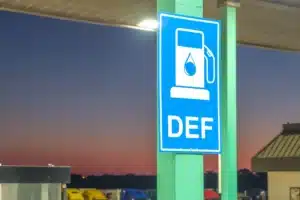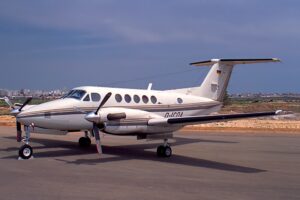Powering the future of sustainable flights with SAF
Australians love their travel and with huge distances to cover between domestic destinations and beyond, our aviation fuel use continues to rise.
And we’re not the only ones – the aviation industry contributes about 2.5% of the world’s total carbon and accounts for about 8% of global oil production.
But as commercial aircraft operators around the world work towards net zero goals, it’s proving one of the most difficult industries to decarbonise.
The demand for jet fuel is growing, particularly in the Asia Pacific region – demand in Australia is expected to increase by 75 per cent before 2050, with Boeing forecasting around 42,600 new commercial jets will be needed over the next 20 years.
At the same time, the limitations of technology make electric engines and alternative fuels like green hydrogen impractical for long haul flights, meaning commercial airlines and defence forces are increasingly looking for solutions in sustainable aviation fuels.
Sustainable aviation fuel – a drop-in replacement for traditional aviation fuel solutions – is quickly gaining a foothold and is already used in more than 250,000 flights.
What is sustainable aviation fuel?
Sustainable aviation fuel (SAF) is a low carbon alternative to traditional jet fuel made from renewable sources like waste or crops.
SAF works with existing aircraft infrastructure. The CSIRO’s Sustainable Aviation Fuel Roadmap says it offers the largest potential to reduce carbon emissions over the next 30 years in all aviation segments.
It’s currently made from five main types of raw materials: oils and fats, sugar and cereal, municipal solid waste, wood and agricultural residue, or renewable energy and carbon, which are used to replace a proportion of the crude oil feedstock.
Depending on the feedstock, SAF can achieve a reduction in CO2 emissions of at least 70% and up to 85% compared to conventional kerosene-based fuel – a significant incentive for airlines when CO2 compliance costs are increasing at around 3.4% a year.
Already, Airbus aircraft are 50% SAF compatible. To address supply, the CSIRO and Boeing are working together to explore production opportunities and Australia and New Zealand are partnering with a view to becoming an integral part of a growing sustainable aviation fuel supply chain.

At Emerald in Queensland, a multi-grain processing facility is being built specifically to support the SAF industry with a capacity to process about 70,000 tonnes a year once complete to support an industry which is projected to be worth up to $3 billion annually by 2030.
How is SAF made?
Each different feedstock uses a different production technology which must be approved by the ASTM before being commercially deployed.
Most of the SAF supplied today is made by converting waste fats, oils, and greases into synthetic kerosene using hydrotreated esters and fatty acids (HEFA).
Standalone units work by turning sustainable feedstocks into synthetic kerosene (SK), which is certified under the ASTM D7566 standard. It is then blended with up to 50 per cent conventional jet fuel, certified to ASTM D1655 or Defence Standard 91-091 and supplied as a conventional Jet A/Jet A-1 fuel.
Alternatively, SAF can be produced through co-processing, where up to 5% sustainable feedstocks are hydro-processed alongside fossil feedstocks in a refinery.
The CSIRO is researching use of gas to liquid technology to create SAF from sustainable sources.
Sustainable aviation fuel – Pros and Cons
Pros – Clean technology and efficiency
The good news is SAF is safe to use in any aircraft that currently use jet fuel.
It achieves lifecycle carbon emission savings of up to 80 per cent – good news for the environment and for reducing compliance costs – this year, tests in Germany with aircraft running on 100% sustainable aviation fuel also found reductions in soot and contrails.
SAF also has a higher energy density than conventional jet fuel, requiring slightly less fuel to be carried and combusted during flight, thereby improving fuel efficiency.
Cons -Price and supply: Fuel is one of the largest operational expenses for commercial airlines and the cost of SAF has until now far outstripped traditional Jet A1 fuel.
In 2020, the overall cost of jet fuel was $0.5 per liter. Meanwhile, the cost of SAF was $1.1 per litre, more than double the price of conventional jet fuel.
But the tide is turning and with jet fuel prices growing at about 1% a year, the efficiencies sustainable fuel can achieve and growth in supply are expected to make it roughly equal to jet fuel and carbon emission costs by 2037.
The CSIRO says while Australia has the feedstock, a lack of on-shire refining capability may also contribute to higher costs and supply constraint in the short-term.
Storing sustainable aviation fuel
In more good news, SAF can be stored in the same fuel infrastructure as other jet fuels and the same principles apply for ensuring fuel stays fresh and in good condition.
The F.E.S Tanks range of portable, self-bunded double-walled aviation fuel tanks provides a hassle-free solution for AVGAS, Jet A1 and SAF that meets or exceeds Australian Standards, with none of the hassle of cleaning and inspecting underground tanks.
F.E.S aviation fuel tanks are also made with a sloping floor and without interior baffles, ensuring a free drainage floor pan and allowing for the safe removal of water from aviation fuel as part of your daily maintenance program.
For expert advice on your sustainable aviation fuel storage needs, call the team at F.E.S Tanks to discuss the aviation fuel storage solution that’s right for you.



